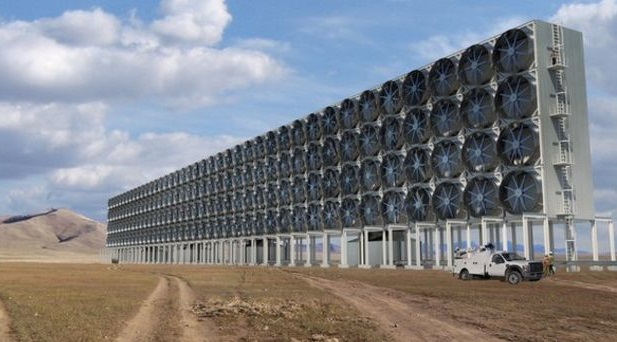Bipartisan Group Introduces a Bill to Support a Controversial Climate Technology
There’s a technology that can put the world on track to beat climate change. But it remains on the fringe because it’s thought to be expensive and risky. In February, a bipartisan group of US senators celebrated when Donald Trump was forced to provide support to develop the technology and make it cheaper, as part of the big spending bill he needed to continue to fund his government.
Read the entire article at Quartz Media.
The support came in the form of an extension to tax credits (called “45Q”) for companies that invest in carbon capture technology, which involves installing scrubbing devices at power plants or chemical industries that burn fossil fuels. The scrubbers selectively remove carbon dioxide from the plant emissions, which can then be compressed and stored underground safely — in effect making the factory or power plant carbon-neutral. The tax credits should incentivize the technology’s use, just as similar tax credits for solar and wind power development did for them over the past couple of decades.
Tax credits, though, are a blunt tool to force the development of a new technology. Provide too few — as was the case with 45Q before being extended — and you won’t get what you want. Provide too many and companies find loopholes to use the tax credits without actually investing in innovation. Hit the sweet spot, and they can work, especially if any other barriers to innovation are removed. That’s why the same group of senators is now back with a new bill called the USE IT act, which stands for Utilizing Significant Emissions with Innovative Technology. They want to ensure that the benefits of 45Q can be fully realized.
Here’s what it proposes creating:
- Funding for research on carbon capture, use, and storage, under the Clean Air Act. This would include specific funding for direct air capture, technology that would pull carbon dioxide from the air.
- A competition to promote technology development in the private sector. Prizes would be awarded to tech proven to capture 10,000 tons of carbon dioxide from the air at a cost under $200 per ton. (It’s worth noting that the target sum for direct air capture is a lot higher than for capturing emissions from sources like power plants. That’s because the concentration of carbon dioxide in the air is less than 1/100th of that in, say, the exhaust of a coal power plant.)
- A board of experts to oversee carbon capture projects and provide technical support to states looking to use the technology.
- A way to promote the development of carbon dioxide pipelines, which can carry the captured emissions from the source to a place they can be safely buried.
The support it adds for direct air capture is perhaps just as essential, because that’s a technology nearly every climate model says we’ll need to scale up in the next few decades to avoid cataclysmic climate change. Direct air capture, when powered by carbon-neutral sources, is a negative-emissions machine. And the longer we take to cut global emissions, the greater our need for a negative-emissions technology will be.


